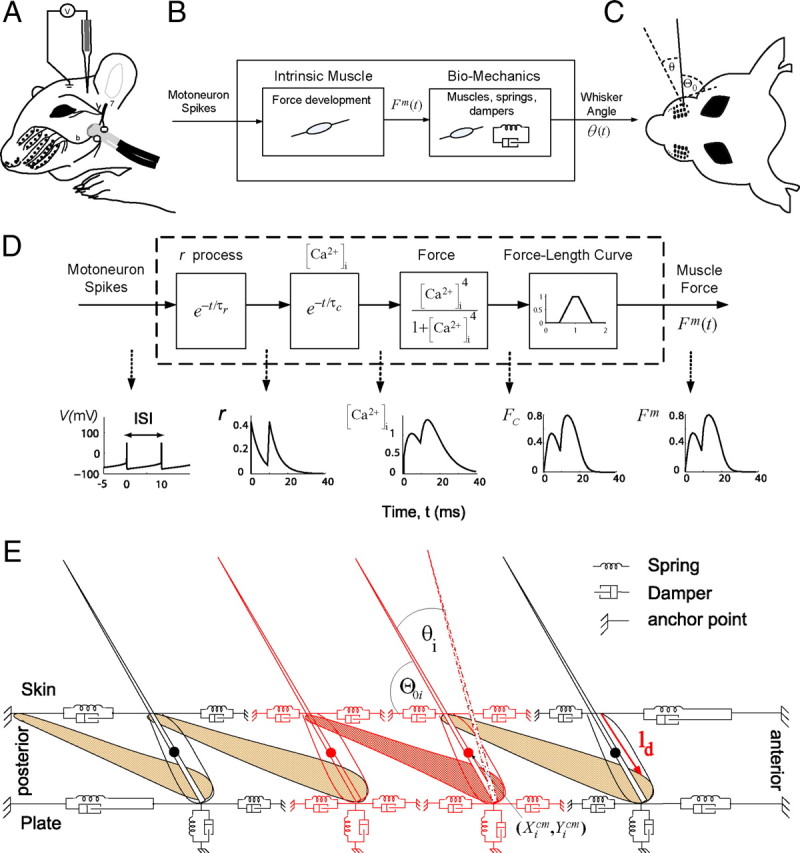Figure 1.

A, Schematic representation of two experimental apparatuses. (1) Electrical stimulation of the buccal motor branch (b) of the seventh nerve (FMN) (cuff electrode) induced whisker protraction and passive retraction. (2) Juxtacellular stimulation of motoneurons in facial nucleus evoked small whisker movement (Herfst and Brecht, 2008). B, Transformation of MN spikes into whisker movements. The two separate processes involved were as follows: (1) transformation of spikes into muscle force Fm(t) and (2) translation of muscle force into whisker movements via the biomechanics of the pad. C, Top view of a rat head and whisker. The whisker resting angle, θ0, is measured between the whisker shaft and the tangent to the pad. The angle θ is the instantaneous protraction angle. D, Block diagram of the transformation of MN spikes (Harish and Golomb, 2010) into muscle force. The model consists of four concatenated processes: the process r (Eq. 1), intracellular [Ca2+]i accumulation (Eqs. 2–4), Ca2+-dependent muscle force development, FC (Eq. 5), and the force–length curve, FL, applicable only for large protraction angles (Eqs. 6–8). The output is the muscle force Fm. E, Biomechanical model of the plant: row of whiskers connected only by intrinsic muscles. Springs and dampers, which model the viscoelastic properties of the tissue, connect each whisker to stationary local sites of the mystacial pad, sites that are represented by anchor points. Elements that belong to one whisking motor unit (WMU), which consists of two whiskers connected by single intrinsic muscle, are plotted in red. θ0i and θi are the resting angle and the protraction angle of the ith whisker, respectively, and ld is the length between the skin and anchor point where the sling intrinsic muscle is attached to the follicle. The dot (black or red) on each whisker shaft represents the center of mass of the whisker (Xicm, Yicm), which is located at a distance −C along the follicle from the skin.
